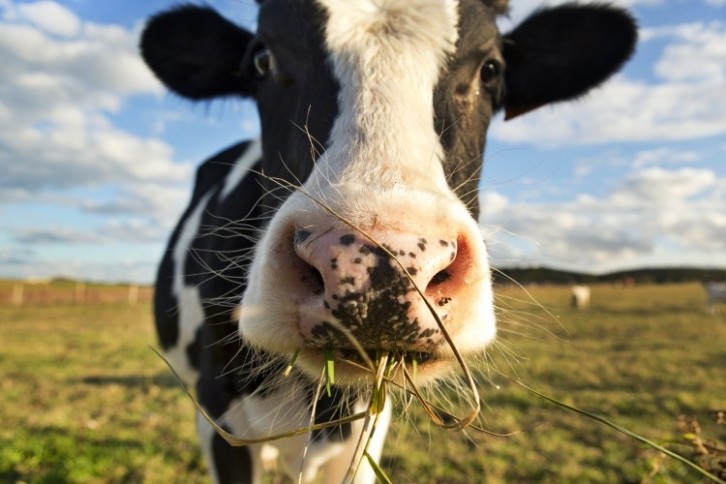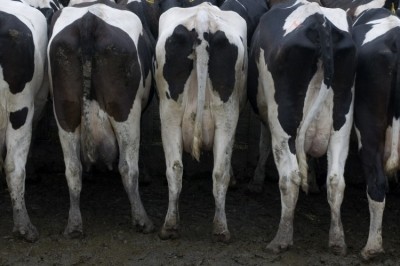Slurry bugs help Leprino Foods UK cut emissions, boost forage milk yield

Leprino Foods UK has struck a two-year contract with Sylgen Animal Health for its slurry inoculant SlurryForSoil that packs so many benefits in one product that the food company has called it ‘a gateway innovation’.
SlurryForSoil contains a blend 18 plant growth-promoting rhizobacteria and fungi, each serving a different purpose. For example, the microbes feed on the slurry and release enzymes to break down the organic matter and make slurry-handling easier; the bacteria can also convert ammonia to nitrite, release enzymes and hormones that help protect plants from pathogens; control larger pests such as molluscs and insects, and remove pollutant from the soil through the microbes’ metabolic processes.
All this helps to increase plant growth and, as a result, bolster forage milk yield.
Leprino Foods UK’s sustainability manager Ben Williams told us: “SlurryForSoil is a gateway innovation as it can help farmers transition to lower emissions spreading technology. In contributing to the growth of better quality forage, SlurryForSoil helps us to increase milk yields from forage and in doing so, challenge more difficult ingredients like soy and palm, for example."
He explained that nutrient management accounts for 10-20% of the company’s on-farm emissions. “It’s a really important area to address, not least because one of those emissions is nitrous oxide, which has very significant carbon footprint – higher than methane or carbon dioxide.”
Williams added that the company had researched ‘many different types of microbial additives’, from slurry inoculants to anaerobic digestion solutions and composting systems. “There are many benefits in using microbes but it was finding so many of those benefits conveniently wrapped up in one product that made SlurryForSoil so appealing,” he explained. “The manufacturer’s approach was key. Sylgen Animal Health shared our belief in the importance of being led by robust practical research.”
Using this product is hoped to improve the efficiency of forage-fed cows whilst reducing the GHG emissions footprint of milk from forage. Asked how much lower forage milk’s footprint can get, Williams told us it’s difficult to put a number on this. “There are too many variables,” he said, “the micro climate of the farm, the soil type, the weather, the type of supplementary feed, and even how the feed is presented, will all impact the GHG emissions footprint of milk from forage.”
However, he added: “What is clear is that those farms that have reduced their carbon footprint significantly – by double digits – have also always seen a substantial increase in the milk from forage. It’s not uncommon for us to see milk yields increase from 3,000 liters to 4,500 liters. Milk from forage is just one factor in an entire interconnected system which has to be considered as a whole."
Asked what other measures the company is taking to reducing its climate footprint, Williams explained that between 50 to 60% of its farmers were engaged in reducing the carbon footprint of production, and nearly 90% were contributing through benchmarking, among other ways.
“Of course, we’d like those numbers to be even higher. We want to see a 30% reduction in pre-farmgate emissions in five years and our greatest challenge is bringing all our farmers on the journey. It not about bringing those with highest footprints into the fold; everyone can contribute and enjoy the benefits associated with more sustainable production.”
Williams said that the company encourage farmers to adopt lean management practices and remove soy from diets. On the former, he said: “The first cohort of 10 farms reduced the cost of production by over £1m and saw a 5-10% reduction in emissions. We’ve just started with next cohort of 25 farms and we’re sharing our methodology and learnings with fellow processors, so the whole dairy industry can benefit.”
As for leveraging SlurryForSoil beyond the initial two-year contract, Williams explained: “In the context of farming, two years is a relatively short period of time so our commitment to two years is a minimum, and it is likely that we’ll extend beyond that timeframe. During those two years, we’ll continue to measure grass yields as well as silage quality. We’ll also be gathering qualitative data around SlurryForSoil’s impact on diesel usage, reduction in stirring time and ease of use during application, for example.”
He added: “We have to ensure that any reductions in emissions are not just per product but an absolute reduction. We’re keeping pace, though admittedly it depends on investment, and that is really tough in a volatile market.
“We don’t have all the answers yet, so a key aspect is collaboration across the supply chain and sharing information across farmers, processors and beyond.”









